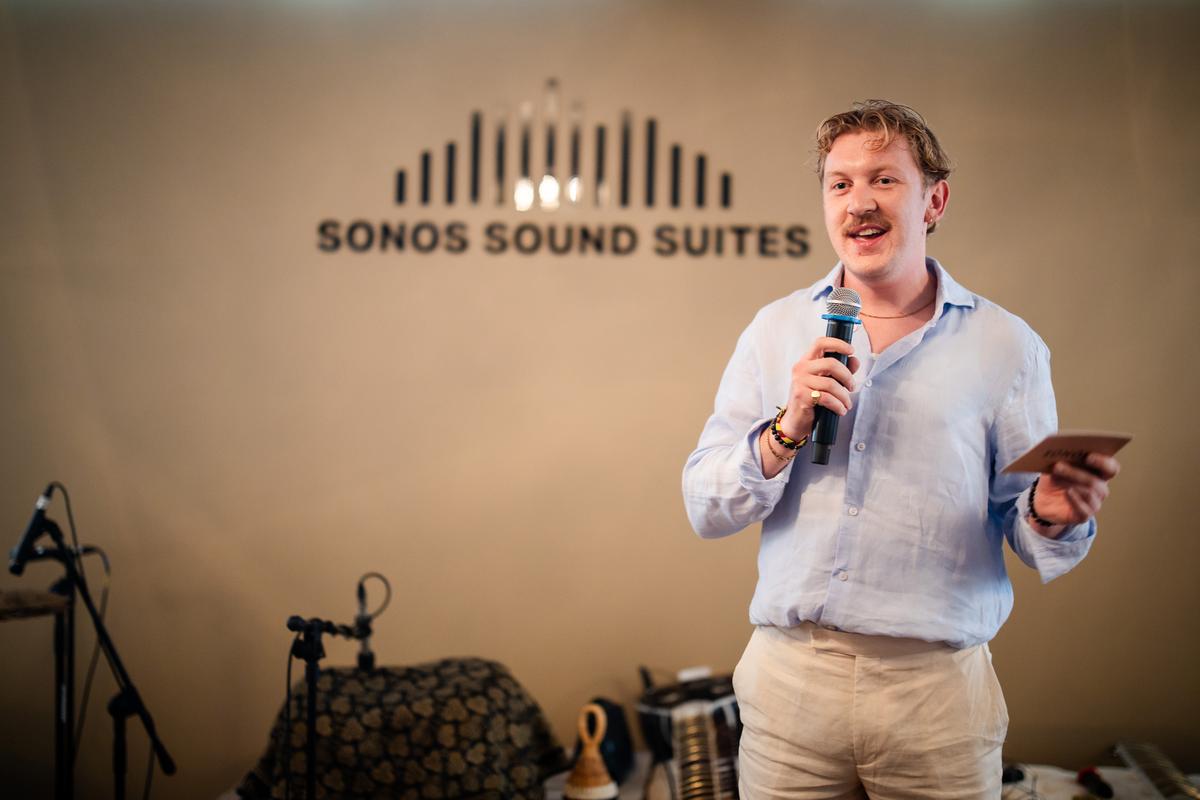What really is ‘good sound’? Is it crystal-clear music, with no technical glitches? Is it the perfect filler to conversations with your loved ones? Or is it perhaps the aesthetic appeal of the speakers? For Harry Jones, sound experience engineer at audio-tech brand Sonos, it’s all of them, and maybe even more. “Even good battery life contributes to a good sound experience. For example, on a beach, if the battery [of the speaker] runs out, a bad sound experience is actually no music at all,” he laughs.
In a chat with The Hindu, Jones talks all things sound — what really constitutes an optimal listening experience, how listeners can ensure great acoustics in their homes, and how Indian consumers are increasingly prioritising a premium listening experience.
Research suggests that jarring sound or music in eateries can affect our sense of taste.
Speaker as accessory
According to Jones, the best version of their creation that artists get to listen to is within the confines of a studio. Once outside, it never quite sounds the same. “Good sound should be as clear a window as possible into the original intent of the artist,” he stresses. The effort to offer this window to listeners later on includes achieving a certain level of form factor as well, and this is where industrial designers step in. “Sure, a sound box might sound amazing. But if it’s an ugly box, we might not even be listening to it!” says Jones.

Harry Jones
Achieving pleasing form isn’t just about aesthetics. It’s fundamentally about the longevity of the products, especially with consumers seeing purchases of speakers and other audio products as an investment. “People might have these products in their homes for years. Having a form factor that is flexible and not intrusive is important. The more beautiful they look, the better they sound,” he adds.
Jones points out how people seemed content listening to music on their phones or perhaps the radio. That practice has now evolved to them valuing good sound and even looking to replicate the complete listening experience they have at a musical event or even the cinemas, right in the comfort of their homes, courtesy of home theatre systems.
Good positioning joins equipment and space in the sound experience trinity.
But in the battle between good equipment and good spaces, who scores brownie points when it comes to ensuring good sound? Jones says it’s a level field between the two. “You could take the best speaker in the world and put it in the worst room, or take the worst speaker and put it in the best room, in both situations, it’ll sound terrible.”
Research suggests that jarring sound or music in eateries can affect our sense of taste. Does our listening experience also impact the way we unwind in our homes? “It’s useful to understand the purpose of any given space. If it’s an ambient space, like a coffee shop, you’re catching up with friends there. You aren’t going to be [actively] listening to music there. But in your living room, if you’re watching a movie, you want a really good sound experience there,” he elaborates.
Placing reflective materials on either side of the speaker or hanging some form of absorption, such as fabric tapestries, on the walls also helps.
Bringing the theatre home
Good positioning joins equipment and space in the sound experience trinity. “One of the best things you can do in your home to immediately improve the sound experience is better placement, especially with soundbars. You want the soundbar to be frontal to your listening position and the surrounds behind you. If you have a single sub, have that at the front. If you have two, place one at the front and one at the back for better low-end distribution in your room,” explains Jones.
Further, in order to ensure a great listening experience at home, one can simply use rugs or carpets to absorb the echo and improve the acoustics of a living space. Placing reflective materials on either side of the speaker or hanging some form of absorption, such as fabric tapestries, on the walls also helps. “With our Trueplay technology, we are looking to correct any frequency anomalies in the room. It works by listening to the music and self-correcting wherever it is placed. We offer these extensive solutions, as we are aware that speakers are not always going to be placed in the best position every time,” he elaborates.
To ensure a great listening experience at home, one can simply use rugs or carpets to absorb the echo and improve the acoustics of a living space.
Similarly, placing different speakers in different spaces in a home can help create a passive but effective listening experience. “At Sonos, we’ve introduced a seamless multi-room control listening experience where everything is perfectly in sync,” informs Jones.
At home, go for
Technology like spatial audio
Speech enhancement
For restaurants
Easy installation: Pick equipment that uses a single cable or a minimum number of cables to deliver both power and data.
Multichannel echo cancellation: To get rid of unnecessary echo and deliver good sound in changing environments.
Software compatibility: The ability to configure speakers and control the settings from a single app or dashboard in order to avoid additional control units.
Flexible mounts: Allow mounting of the speakers at different angles and tilting them as required to install the speakers in any orientation.
The writer and theatre artist is based between Bengaluru and Delhi.
Published – September 05, 2025 05:51 pm IST






















